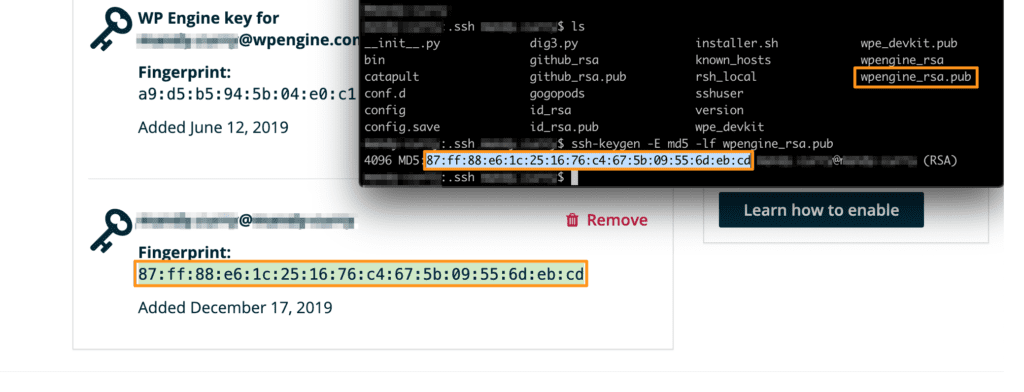Generated Ssh Key Which One Do I Keep On Local
Posted By admin On 12.12.20SSH keys are a way to identify trusted computers, without involving passwords. The steps below will walk you through generating an SSH key and adding the public key to the server.
- Generated Ssh Key Which One Do I Keep On Local Network
- Generated Ssh Key Which One Do I Keep On Local Tv
- Generated Ssh Key Which One Do I Keep On Local Business
- Generated Ssh Key Which One Do I Keep On Local News
Step 1: Check for SSH Keys
Generate a key pair with a third-party tool of your choice. Save the public key to a local file. For example, /.ssh/my-key-pair.pub (Linux) or C:keysmy-key-pair.pub (Windows). The file name extension for this file is not important. Save the private key to a different local file that has the.pem extension. Using SSH public-key authentication to connect to a remote system is a robust, more secure alternative to logging in with an account password or passphrase. SSH public-key authentication relies on asymmetric cryptographic algorithms that generate a pair of separate keys (a key pair), one 'private' and the other 'public'.
- SSH keys are a way to identify trusted computers, without involving passwords. The steps below will walk you through generating an SSH key and adding the public key to the server. Step 1: Check for SSH Keys First, check for existing SSH keys on your computer. Open Git Bash, Cygwin, or Terminal, etc.
- Replace the user and server with your username and the server address you wish to use the key authentication on. Ssh-copy-id -i /.ssh/idrsa.pub user @ server. This also assumes you saved the key pair using the default file name and location. If not, just replace the key path /.ssh/idrsa.pub above with your own key name.
- Simply put, you generate two mathematically related keys, called “public” and “private” keys. Then, you copy the public key to the server, but you keep the private key on your local machine, safely guarded from others. Due to how these keys work, you can encrypt data only with the public key, and decrypt data with the private key.
First, check for existing SSH keys on your computer. Open Git Bash, Cygwin, or Terminal, etc. and enter:
Check the directory listing to see if you already have a public SSH key. By default, the filenames of the public keys are one of the following:
- id_dsa.pub
- is_ecdsa.pub
- id_ed25519.pub
- id_rsa.pub
If you see an existing public and private key pair listed (for example id_rsa.pub and id_rsa) that you’d like to use, you can skip Step 2 and go straight to Step 3.
Step 2: Generate a new SSH key
Generated Ssh Key Which One Do I Keep On Local Network
With your command line tool still open, enter the text shown below. Make sure you substitute in your email address:
You’ll be asked to enter a passphrase, or simply press Enter to not enter a passphrase:
After you enter a passphrase (or just press Enter twice), review the fingerprint, or ‘id’ of your SSH key:
Step 3: Add your key to the ssh-agent
To configure the ssh-agent program to use your SSH key, first ensure ssh-agent is enabled.

If you are using Git Bash, turn on the ssh-agent with command shown below instead:
Then, add your SSH key to the ssh-agent:
Generated Ssh Key Which One Do I Keep On Local Tv

Step 4: Add your SSH key to the server
To add your public SSH key to the server, you’ll copy the public SSH key you just created to the server. Substitute “username” with your username on the server, and “server.address.com” with the domain address or IP address of your server:
The server will then prompt you for your password:
Generated Ssh Key Which One Do I Keep On Local Business
Generated Ssh Key Which One Do I Keep On Local News
That’s it! You should now be set up to connect to the server without having to authenticate.